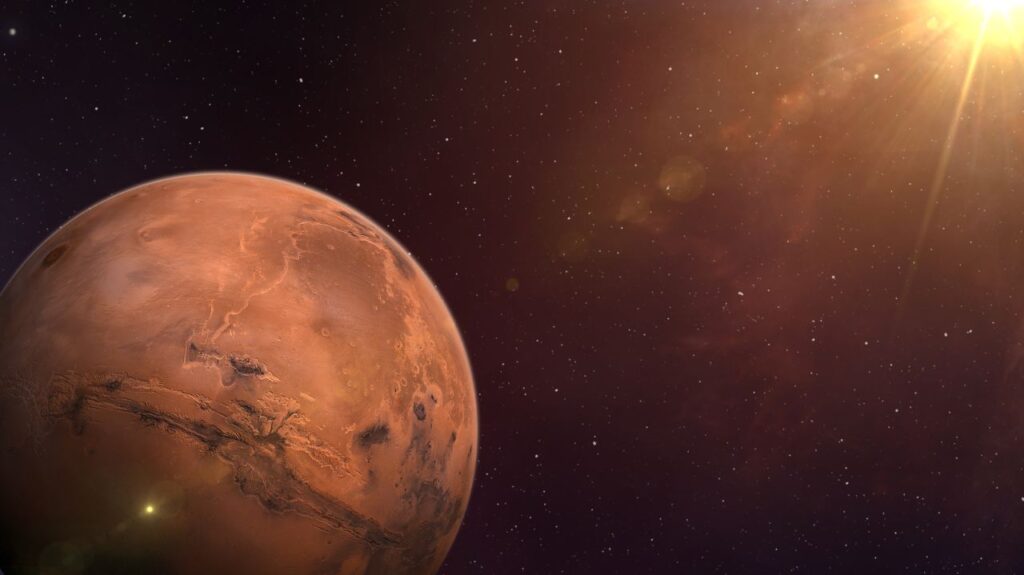The assumption is clear: extraterrestrial water is not only present on the Moon, but also on Mars, the planet of the Solar System closest to us. In fact Mars, our neighboring red planet, once boasted rivers and seas, flowing much like those on Earth. Over billions of years, the planet’s atmosphere dissipated, leaving a barren, desert-like landscape. Yet, scientists believe that Mars still holds a reservoir of liquid hope: water, concealed deep beneath its crust
In a recent groundbreaking discovery, researchers from the University of California, Berkeley, have used seismic data from NASA’s InSight lander to conclude that Mars likely harbors enough subsurface water to cover the entire planet with an ocean nearly two kilometers thick. This revelation not only reshapes our understanding of Martian geology and climate history but also unveils exciting possibilities for future space exploration technologies, such as the revolutionary propulsion systems being developed by MIPRONS.
Decoding Mars’s Subsurface Secrets
InSight, which landed on Mars in late 2018, gathered vital seismic data that has allowed scientists to model the Martian interior with remarkable precision. Employing techniques used on Earth to identify groundwater and oil reservoirs, the research team discovered a deep layer of fractured igneous rock, saturated with liquid water. While this precious resource sits between 11.5 and 20 kilometers below the Martian surface—a depth comparable to humanity’s deepest borehole on Earth—it confirms the existence of a potential game-changer for planetary exploration.
“Understanding Mars’s water cycle is fundamental for grasping the planet’s climate evolution, surface dynamics, and internal processes,” co-author Vashan Wright emphasized during a press briefing. “Pinpointing the location and volume of this water is a crucial first step.”
A Path to Sustainable Space Missions
Why is this discovery so pivotal for the future of space travel? The answer lies in one of the universe’s most abundant and versatile resources: water. For MIPRONS, a trailblazer in water-based propulsion technology, the hidden reserves of liquid water on Mars present a tantalizing opportunity. The company’s cutting-edge propulsion system relies on water electrolysis, which splits water molecules into hydrogen and oxygen. This process yields a clean and efficient propellant that could revolutionize how we navigate space.
As humanity sets its sights on establishing a sustainable presence on other planets, the prospect of tapping into Martian water reserves becomes more than a scientific curiosity. It becomes a strategic necessity. Water can be transformed into breathable oxygen and drinking supplies, while also serving as a fuel source for propulsion systems like those MIPRONS is pioneering. By harnessing these subsurface reservoirs, long-term missions to and from Mars could be more efficient and independent from Earth-based resupply.
Redefining Possibilities with MIPRONS
Imagine a future where Martian water propels spacecraft on interplanetary voyages. By capitalizing on water’s potential as a propellant, space travel could be transformed, bringing us closer to exploring the cosmos in ways once thought impossible.Discoveries like the deep aquifers of Mars not only ignite scientific curiosity but also underscore the value of innovative propulsion technologies. They pave the way for a future where water is the ultimate enabler of our cosmic ambitions — one drop, one molecule, one propulsion system at a time.

